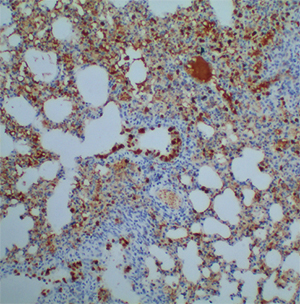Decreased VEGFA alleviates the symptoms of LPS-induced sepsis in a mouse model by inhibiting glycolysis and thereby regulating the polarization of macrophages
The immune imbalance caused by excessive inflammatory reactions is the primary cause of sepsis. Macrophages with M1 and M2 polarization states are important immune cells that regulate the balance of the inflammatory response in sepsis. Encouraging the conversion of macrophages from the M1 to the M2 type is an important strategy for relieving sepsis. Here, we demonstrated the upregulation of vascular endothelial growth factor A (VEGFA) in a mouse model of sepsis. Then, siRNA technology was applied to inhibit the expression of VEGFA in macrophages. Flow cytometry and RT‒qPCR results showed that low expression of VEGFA inhibited LPS-induced M1 polarization of macrophages. Decreased VEGFA was also proven to lower TNF-α, IL-1β, and IL-6 secretion by LPS-induced macrophages. In addition, the effects of knocking down VEGFA on the energy metabolism pattern of macrophages were investigated by glycolysis pressure tests and mitochondrial pressure tests, and VEGFA knockdown reversed the induction of glycolysis in macrophages by LPS. The mitochondrial content and ATP content results also confirmed this finding. After the tail vein of septic mice was injected with macrophages transfected with si-VEGFA, the liver and kidney damage and the pathological conditions of the lung were alleviated. The secretion of TNF-α and IL-6 was decreased, while IL-10 was increased in their serum. Immunohistochemical staining revealed decreased expression of CD86 and increased expression of CD206 in the si-VEGFA group. This study demonstrates that decreased VEGFA inhibits glycolysis and thus inhibits LPS-induced M1 polarization of macrophages, ultimately relieving sepsis.
How to Cite

This work is licensed under a Creative Commons Attribution-NonCommercial 4.0 International License.
PAGEPress has chosen to apply the Creative Commons Attribution NonCommercial 4.0 International License (CC BY-NC 4.0) to all manuscripts to be published.








